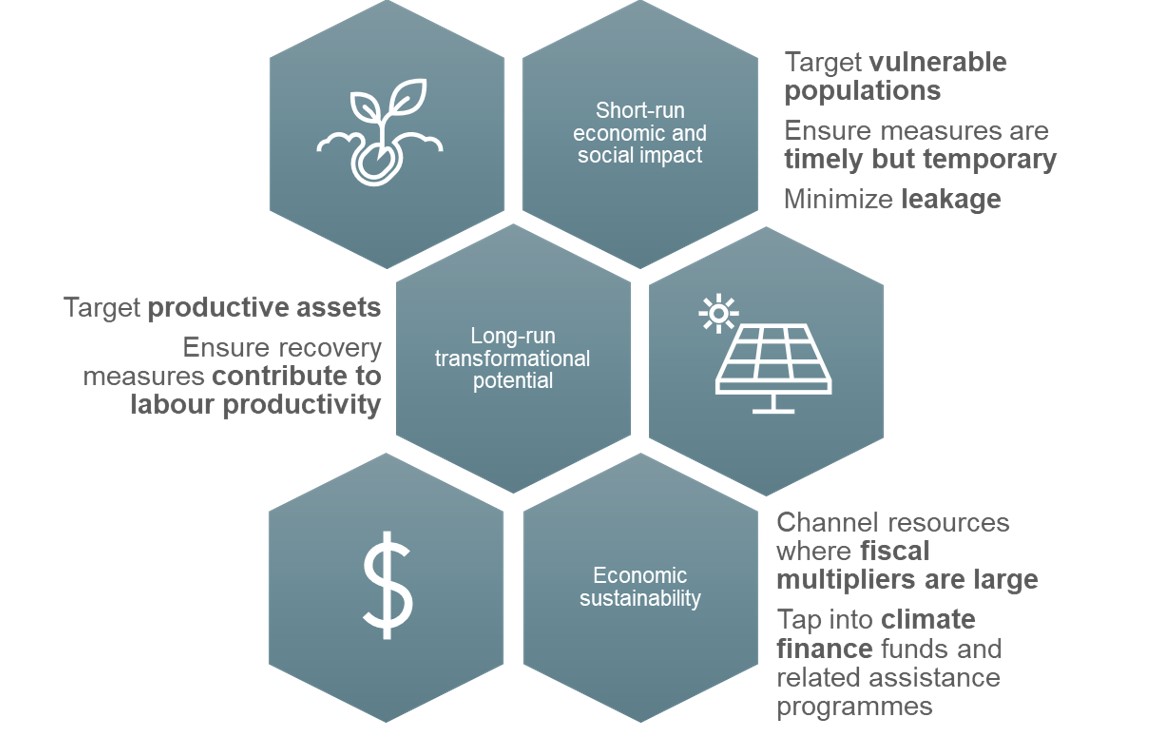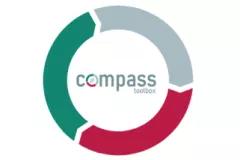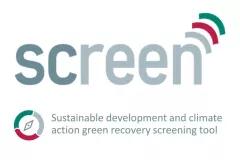The SCREEN tool and the underlying COVID-19 recovery framework aim to help policymakers to identify and analyse green recovery measures that can effectively cater to the distinct recovery needs and development priorities of developing countries.
Main findings:
Climate action and COVID-19 recovery in developing countries
Since the onset of the COVID-19 crisis, multiple organisations have published green recovery frameworks, building on a growing body of research evaluating the effectiveness of different policy archetypes. Green recovery frameworks, and their respective assessment criteria, are used as a tool to evaluate the appropriateness and greenness of economic stimulus measures and to inform the design of impactful and sustainable recovery programmes.
We find the ability of existing generic green recovery frameworks to inform policy choices in developing countries to be limited. Restricted fiscal space is the primary limitation developing countries face with respect to funding recovery interventions, but also the effectiveness of fiscal interventions, in terms of the size of the economic impacts leveraged, can be lower than in more advanced economies.
We provide recommendations for a green recovery framework that extends assessment dimensions of established frameworks to specifically reflect developing countries’ distinct characteristics and development priorities. These highlight the need to consider broader socio-economic dimensions (i.e. pro-poor growth) and prerequisites for long-term transformational change. 
The SCREEN tool: A green recovery framework for developing countries
Framework operationalisation (qualitative analysis)
The SCREEN tool provides policymakers and analysts with a means of operationalising the green recovery framework conceptualised in the accompanying report. The SCREEN tool allows users to define their country’s context, development priorities and distinct challenges. Based on the specification of these characteristics, the user is provided with a shortlist of potentially impactful policy focus areas. Within each policy focus area, the user can qualitatively evaluate user-defined and pre-defined recovery measures along the criteria of the proposed recovery framework. 
Input-output analysis (quantitative analysis)
For countries where Input-Output tables are available from the OECD’s database, the SCREEN tool also allows users to quantitatively analyse where recovery spending is likely to drive the largest output growth response, or, conversely, where spending is likely to have little impact. Users can estimate the direct, indirect and induced economic impacts and employment generation potential of fiscal policies. 






